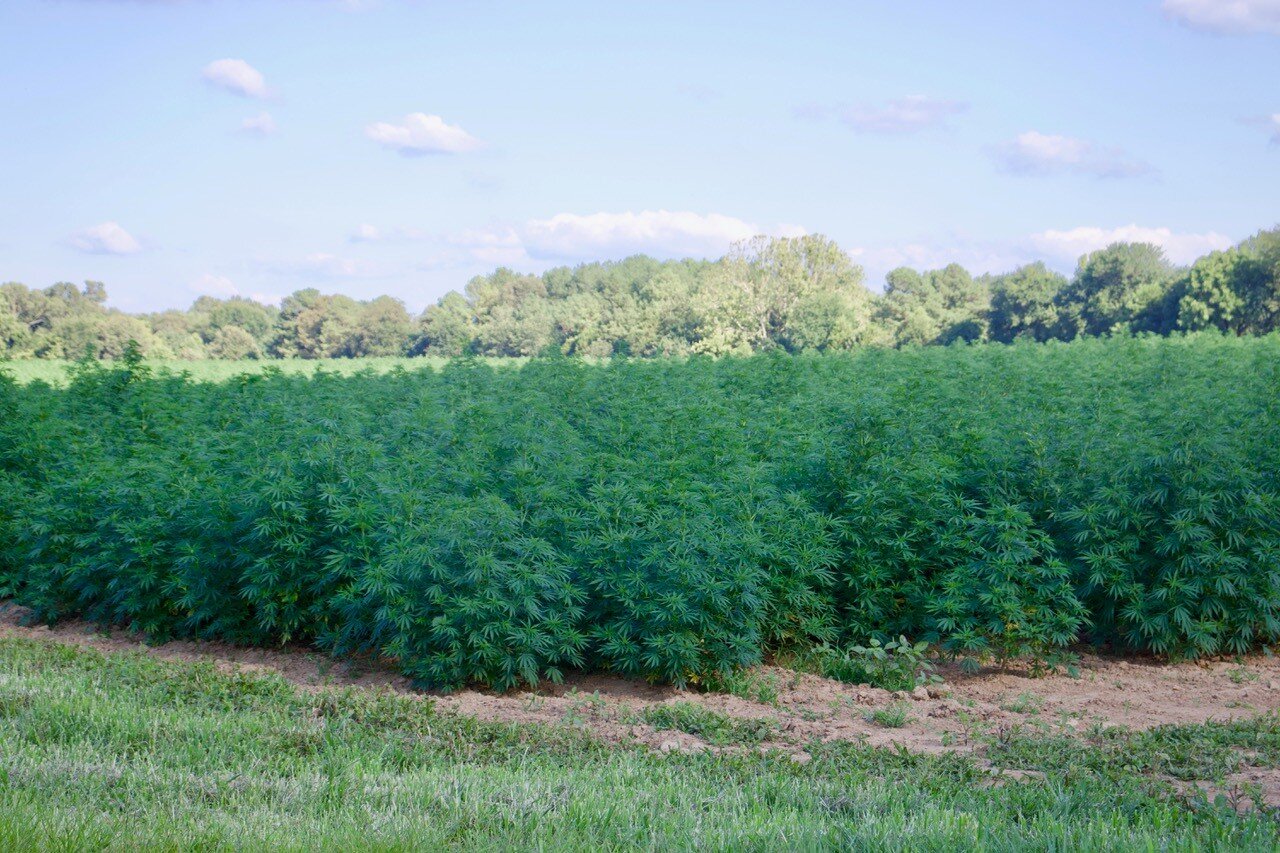Kentucky company finds niche in hemp
By Lynn Pruett, The Farmer’s Pride
On a pleasant day in early August, Hempwood employees in Calloway County were sending round bales of hemp through the manufacturing process that turns hemp fiber into lumber.
Blaine Parr, a Murray State University graduate who works half-time at Hempwood and half-time at the Murray State aqueous hemp greenhouse, says, “We’re 20 guys pressing hemp.”
He was hand-flattening cleaned, damp swaths of hemp in preparation for the next step in the process, drying in a repurposed tobacco curing oven. Then it is pressed into forms, which create squared off logs. The logs are cut into planks. As they air cure, they tend to bow and then will lay flat after the last moisture is gone. The boards are finished or not, depending on the customer order.
Greg Wilson, owner of Hempwood, has patented the process and the product. It can be used as lumber, flooring, furniture or hand-turned into bowls and jewelry as local Murray artisan Squire Babcock does. An Amish consortium in Bowling Green makes it into sturdy tables. In Hopkinsville, the lumber is turned into “green” caskets. A duck call made with Hempwood will soon be on the market.
Hempwood is a bright spot in the nascent hemp industry. Started in 2019, it had a solid first year, though COVID-19 has impacted sales in 2020. Yet with the national focus on health and eco-friendly products, Hempwood is well-positioned to grow, which is good news for hemp farmers.
“A hemp farmer is 100 percent dependent on the success of the processor,” said Ag Commissioner Dr. Ryan Quarles. Hemp manufacturers need to “make products Americans want to buy to enter this new national market. It’s an entrepreneurial time.”
Wilson is an engineer who has set up 37 engineered wood manufacturing plants worldwide. He has worked in China with bamboo, in Tasmania with SmartOak, and Australia with eucalyptus.
When Murray State launched its hemp research program, Wilson contacted Tony Brannon, dean of the Hutson School of Agriculture. Wilson believed hemp fiber could be engineered into lumber.
Together they developed a partnership where “Hempwood supports their research and Murray State supports our science,” said John Crye, sales manager, at Hempwood.
Hempwood’s products are not subject to the regulations that other hemp products are and that has helped the company survive the volatility of the market. For example, the car fabrics made from hemp fiber have yet to be approved for safety by the DOT. The approval of CBD oil as anything more than an herbal supplement has been slowed by the FDA’s focus on COVID-19. A “bureaucratic bottleneck” has hurt the industry’s growth, according to Quarles.
As a result, much of the hemp grown in Kentucky in 2019 is still unsold. Three large processors have filed for bankruptcy, Atalo, Gencanna, and Sunstrand, leaving many farmers unpaid as court cases are resolved.
Tommy Copeland, supply chain manager at Hempwood, says the company has bought harvested hemp fiber from growers who had contracts with Sunstrand. One of the current challenges he faces is convincing farmers to plant hemp.
Quarles said there will be fewer acres in hemp this year.
In 2020, 960 growers have been licensed to grow up to 32,000 acres of hemp, down slightly from 2019, when 978 were licensed. One hundred fifty-seven growers from 2019 did not renew their requests for licenses this year but were granted permits to store last year’s crop until market conditions improve.
Copeland, who started as an intern and was hired full-time, brings an excellent science background to his work.
“It’s all about genetics now. There are hemp genetics from many countries to consider. We want the best genetics for fiber that will grow well in our area. Hemp is a photosensitive crop so planting time matters. How tall it is before it begins to make seeds is important.”
At Hempwood, “We buy the fiber,” he said. “Many growers grew for the flowers and seed. If we buy the fiber after the tops have been harvested then it’s not the same grade as hemp harvested and retted for our purposes.”
Copeland suggests farmers begin with less than 40 acres of hemp the first year because “you will make mistakes.”
Wilson noted the 2,000 acres of hemp currently growing in Calloway County, which is positive for his company. He will purchase hemp grown within 100 miles of the plant. He also invited farmers who want to use wood from hemp they’ve grown to contact the company about processing it for them.
Hemp is more environmentally friendly and more efficient to produce than lumber from trees. It requires less material to produce the same square footage as forestry-grown wood.
“It takes six months to grow a hemp crop but 50 to 100 years for a single oak tree,” John Crye said. “With these processes, we can get away from forestry and get totally into agricultural products for wood needs. Anything wood can do hemp can do better.”
Hempwood is 80 percent hemp fiber, 15 percent soy flour glue and 5 percent “other” or “likely pigweed,” according to Wilson. It is 20 percent denser than oak.
It is clear that the partnership with Murray State and the employment of ag students in the hemp program who bring both knowledge and a work ethic Wilson appreciates, has given Hempwood a solid base of workers, which combined with the ingenuity and drive of its founders, offers hope for a long-term viable market for Kentucky hemp fiber.



